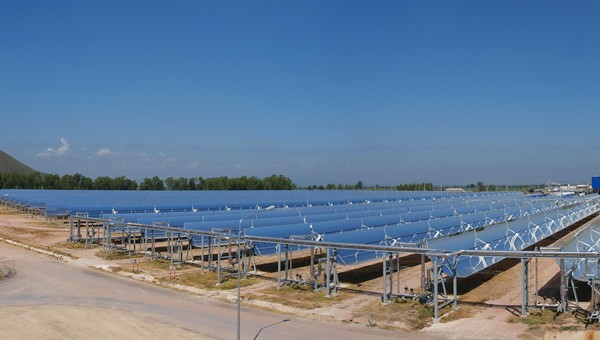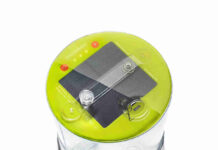
The solar thermal power plant fed its full output of five megawatts into the grid for the first time on 25 January 2012.
This power plant went into operation at the end of last year, and is the first parabolic trough collector array in which steam is generated directly in the collectors. Researchers from the German Aerospace Center (Deutsches Zentrum für Luft- und Raumfahrt; DLR) have advised on both the development of individual components and on the overall design of the facility.
The power plant’s collector field was built by the German company Solarlite GmbH and is operated by energy supplier Thai Solar Energy Company Ltd.
Water instead of oil
“This facility sees the results of a lengthy, DLR-led research programme on direct steam generation in parabolic trough collectors being used in a commercial application for the first time,” says Robert Pitz-Paal, Co-Director of the DLR Institute of Solar Research.
Direct evaporation involves water flowing in the absorber tubes onto which parabolic troughs focus solar radiation, instead of thermal oil. The tubes are under a pressure of 30 bars and the temperature of the resulting steam is 330 degrees Celsius. “When the heat is transferred directly to the water, the process temperature of the power generator and hence its level of efficiency can be increased. This means that, in the long term, direct steam generation can be used to reduce the costs of solar thermal power plants .”
More power plants planned for Thailand
Solarlite GmbH was commissioned to design and build the facility. It set up 86 collector troughs, each 120 metres long, over an area of 100,000 square metres in the Thai province of Kanchanaburi. The plant has an output of five megawatts. The company is planning more power plants in the region, with a total capacity of 135 megawatts. “This power plant is an important milestone for our development work in direct evaporation technology. With the help of DLR, and following tests and pilot projects, we have now been able to convert our environment-friendly energy generation concept into a commercial project,” says Solarlite CEO Joachim Krüger.
Solar thermal power plants are considered an indispensible component of future energy supplies based on reusable sources. They have the advantage of being able to store energy in the form of heat. Such power plants can also be constructed as hybrid generators, using conventional fuels or biomass. These can provide power based on demand and can compensate for fluctuations in energy production from wind power and photovoltaic facilities.
How a solar thermal power plant works
In solar thermal power plants, infrared radiation from the Sun is concentrated using mirrors and converted into thermal energy; this process is referred to as Concentrating Solar Power (CSP). Temperatures of 400 to 1200 degrees Celsius can be achieved by focusing the radiation. This thermal energy can be used to generate steam that drives turbines, similar to a conventional power plant, or can power a Stirling engine to generate electricity. Four different types of mirrors can be used to collect solar radiation: (1) parabolic trough, (2) flat mirrors directed towards a single point near the top of a tower, (3) parabolic dish or (4) linear Fresnel collectors.
Dirk Rinus Krüger, the project manager at DLR , is delighted at the fact that the previous test was successful: “It is fascinating to see how the giant collector field aligns itself with the Sun, and steam drives the turbines. The power plant can be easily and accurately controlled when solar radiation levels vary.” The DLR researcher and his team have tested the quality of the Solarlite collectors and advised the company on the design of the facility. DLR and Solarlite will be further developing the principle of direct steam generation under the German Federal Environment Ministry’s ‘DUKE’ research project, running until 2014. The aim is to improve the efficiency of the process and reduce electricity costs even further.



